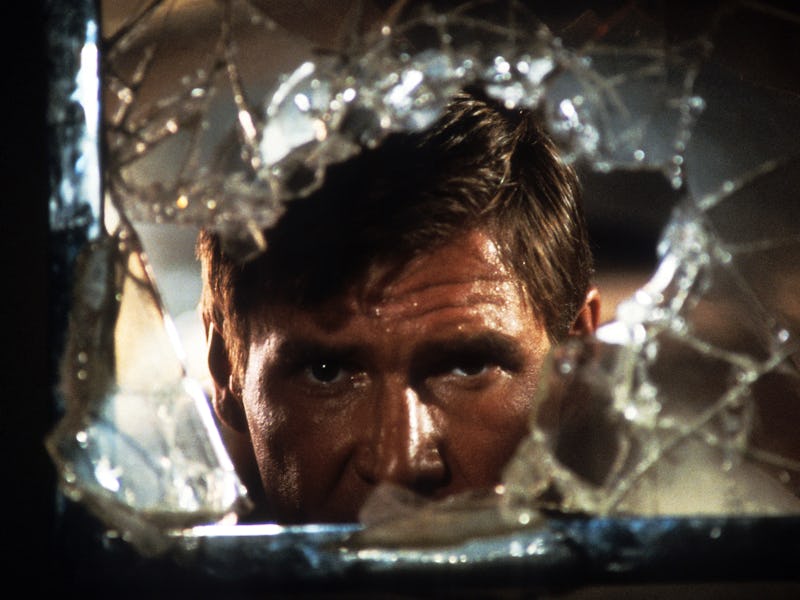How the Most Underrated Indiana Jones Movie Changed the Course of Hollywood History
“Okey dokey, Dr. Jones.”

If there is one word to describe most of the Indiana Jones films, it would be “nostalgic.” The series was originally conceived to recall the adventure serials of the 1930s and ‘40s with their swashbuckling epics and cliffhanger endings. Over the years, this nostalgia for the past has only become more powerful, to the point where 2023’s Indiana Jones and the Dial of Destiny seemed nostalgic for Indy himself. However, one installment has always remained an outlier. Released 40 years ago on May 23, 1984, Indiana Jones and the Temple of Doom rejected nostalgia for something darker, and in the process it not only changed the franchise but the course of Hollywood history as well.
The first film, Raiders of the Lost Ark, was a tremendous success, both critically and at the box office. It was the highest grossing film of 1981, proving that its creators, George Lucas and Steven Spielberg had the golden touch regardless of genre or franchise. A sequel was inevitable, but George Lucas, who was going through a divorce, was in a more downcast mood this time around — and it showed.
Fresh off The Empire Strikes Back, Lucas also knew that going dark with the sequel to a popular escapist blockbuster could work. His Star Wars follow-up, released four years earlier in 1980, ends with Han Solo captured and frozen in carbonite, Luke Skywalker losing a hand, and the rest of the film’s heroes just barely surviving to fight another day. So with Spielberg as a reluctant but willing participant, the duo concocted a story that was actually an Indiana Jones prequel, one that saw him going toe to toe with an Indian cult leader named Mola Ram, a man prone to both ripping out hearts during human sacrifices and child kidnapping in an effort to find a set of sacred stones. Those of his group that aren’t violently slain end up being mauled by crocodiles in the climax.
Raiders of the Lost Ark may have ended with Nazi faces melting off, but the whole tone of Temple of Doom would be just as harsh as that epic finale. In this way, Temple of Doom seems to recall a different type of classic source than Raiders. Rather than Buck Rogers or Zorro, Temple of Doom feels akin to pulp magazine stories, the kinds written by the likes of Conan creator Robert Howard or Doc Savage author Lester Dent. These tended to have a rougher edge and followed adventures that were just as brutish as they were exotic. Their treatment of race was also often dubious at best, a criticism that’s been pointed at Temple of Doom.
Director Steven Spielberg and producer George Lucas on the set of Indiana Jones and the Temple of Doom.
Temple of Doom’s current status isn’t the result of a modern reappraisal either. It was a box office smash, but a number of critics found the top-notch joys of Raiders to be lacking in its follow-up. They weren’t the only ones. The Motion Picture Association of America (MPAA) granted the film a PG rating instead of an R, and an outcry from parents. Spielberg, at this point not just a popular director but an influential voice in Hollywood, helped push then MPAA president Jack Valenti to create a rating that bridged the gap: something for young people that were old enough to handle stuff that leaned to the scary side. PG-13 was born.
Indiana Jones and the Temple of Doom, though controversial, isn’t without its merits, even if Spielberg pivoted back to an upbeat tone with The Last Crusade. The director is a master technician of the moving parts of an adventure sequence, able to see where tiny details fit and work together in a way that’s cemented his reputation. Harrison Ford gets to show off a kind of bloody intensity that adds another layer to Jones, and Ke Huy Quan’s rambunctious Short Round is one of the most lovable child characters in cinema history.
Kate Capshaw and Jonathan Ke Quan in Temple of Doom.
And for fans that did want to see Indiana Jones get a little more gory, Temple of Doom is a feast. At one point, a brawl between Jones and a large henchman (played by Pat Roach, who was also the thuggish mechanic beheaded by a propeller in Raiders) ends with the latter being agonizingly crushed by a rock grinder. The grinder then spinning further to reveal a massive streak of blood is straight out of a glorious ‘80s slasher flick.
2023’s Indiana Jones and the Dial of Destiny marked the definitive end of the series (for now, at least), and considering that it’s been promised the role of Jones will never be recast, we’ll likely never see a return to the particular menace of Temple of Doom. But whether one views it as a fun detour or a franchise black sheep, its impact is undeniable. Few films ever mark turning points for the way that audiences are able to see movies in general, but by pushing the creation of PG-13, Indiana Jones and the Temple of Doom did just that.